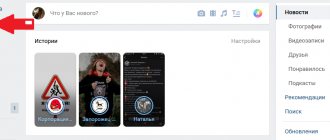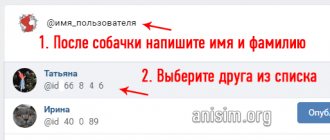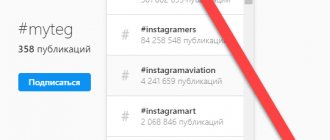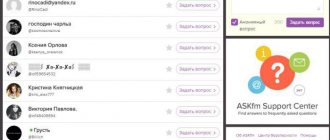Audience activity on different social networks may vary depending on the popular content format, the algorithmic news feed on the social network itself, the time of day, day of the week, and many other factors.
Based on community analyzes conducted by Popsters users in 2021, we aggregated data from 580 thousand different public pages in 7 social networks, taking into account the characteristics of 460 million publications in total.
We share the results of the study: we talk about the most effective days of the week and time of day for publishing, the ratio of ER and the number of posts with the number of subscribers, interest in publications with different text lengths on different platforms, and much more.
Read the detailed methodology and full version of the study:
Russian version
English version
Research on audience activity on social networks in 2021.
Research on audience activity on social networks in 2021.
Dependence of activity on social networks on the day of the week
On average, Monday and Sunday were the most popular across all social networks. Last year, users were most active on Tuesday.
According to the results of this study, activity on social networks remains almost unchanged during the week, with a slight decline noticeable only on Wednesday.
On VKontakte, the day with the highest activity is Monday. The decline is noticeable on weekends, especially on Saturday.
On Monday, Facebook posts received the most reactions on average. The decline occurs on Saturday, but Sunday is no different from weekdays.
On Instagram, posts received the least reactions on weekends.
Publications on Odnoklassniki receive the most reactions on Monday, and the least on Tuesday.
Twitter posts received the most engagement on Sunday and Monday, with declines occurring on Thursday and Friday.
On Telegram, posts received the most engagement on Saturday.
On YouTube , videos uploaded on Tuesday and Sunday received the most reactions, and Wednesday was the quietest day.
In general, across all social networks, posts receive the most engagement on Sunday and Monday; the worst day for this indicator is Wednesday.
When is the best time to post on Facebook?
Facebook users are predominantly entrepreneurs, top managers, public figures, programmers and people of creative professions aged 25 to 50 years. They are interested in business, political and cultural news. This social network concentrates most of the professional audience that establishes business contacts.
The best time to publish is from 14:00 to 15:00. Facebook is dominated by working users who, after their lunch break, want to read interesting news and comment on friends' updates. Posts published at 13-14 hours collect a large number of reposts; if you need clicks, post the news after 15.00.
User activity increases on Monday and Friday, because... on Monday, users are not yet ready for the work week and spend time on social networks, and on Friday they are already preparing for the weekend.
According to research from HubSpot and Microsoft, the optimal time to post is Thursday and Friday from 1 to 3 p.m.
Instructions on the topic: How to post on Facebook
Recommendations for posting on Facebook:
- Pay attention to the specifics of your target audience (housewives can view the news at any time, and business people only during their free hours).
- Study the statistics of visits to competitors' pages depending on the time of day and day of the week.
- Publish news during periods of greatest user activity.
- Experiment with posting times to find the best option; try publishing information during periods of less active audience activity. Perhaps the amount of information is dwindling at this time, but your audience is still online.
- Post your news at the same time so that your subscribers get used to the regularity of your posts.
- Experiment with posting days if you post several times a week.
This is interesting: What is the best time to post videos on Tik Tok?
Audience activity by time of day
VKontakte publications published from 21 pm to 1 am receive more reactions. The worst results are posts posted between 3 and 5 am.
On Facebook, the situation is different - the greatest effect is achieved by posts published at 15 and 17 hours of the day, and the worst time for posting is midnight.
Instagram posts published between midnight and 7 am receive the least amount of likes and comments. There are two noticeable peaks of activity on the social network: 10-11 am and 20-21 pm.
Odnoklassniki user activity decreases from 11 pm to 7 am.
Twitter posts get fewer reactions between 4 and 7 am, and the best time to post is 10 am.
On YouTube, the average number of reactions to a post drops at 10-11 p.m., but rises again at 1 a.m. and decreases by 3 a.m. Morning and mid-day, from 9 a.m. to 2 p.m., are the most active periods (along with 1 a.m.).
On Telegram , posts posted at 3 am and 10 am have the most reactions.
The graph below shows the distribution of activity by time of day on average across all social networks.
The best time to post on Instagram
The Instagram social network reaches a predominantly female audience aged 25 to 45 years. The range of interests of this audience: beauty, fashion, cinema, celebrity life, active and healthy lifestyle. Most often, users access Instagram from their mobile devices.
The optimal time for posting largely depends on the target audience: young people and students visit Instagram throughout the day, working users most often go to view news during their lunch break or at the end of the working day. According to the schedule, the greatest activity occurs at 9 a.m., at lunchtime from 3 to 5 p.m., and in the evening from 7 to 9 p.m. It is also worth noting that between 9 a.m. and 10 p.m., the activity of Instagram users drops slightly.
Latergramme experts say that it is best to post content between 17.00 and 21.00, when most people leave work and go home. The smartphone is always at hand, so you can read the latest news.
Experts point out that in the evening the number of publications is significantly reduced, which increases the chances of reaching a larger audience.
Analyzing the activity of followers by day of the week, we can draw the following conclusions:
- On Monday, entertainment content is most popular. Users are starting a new work week and do not want to overload themselves with unnecessary information.
- On Tuesday, you can post important and useful texts - subscribers have already joined the work rhythm.
- Wednesday is the perfect day to share the results of your work. You can show a live broadcast or video from the workplace. Readers will also be interested in learning about interesting promotions and projects in which you participate.
- Thursday is customer day. Show your followers happy customers and tell them about your interactions with them.
- On Friday, it is recommended to post light content that prepares users for the weekend.
- We continue to share entertaining pictures and videos over the weekend.
Type of content and its impact on engagement
Popsters breaks all publications into 4 formats: text, photo, video, link.
On VKontakte, posts with photos turned out to be the most effective, while posts with videos and links are inferior to posts with photos and text.
on Facebook , but posts with links perform the worst.
On Instagram, content type had little effect on engagement. In the study, a link to Instagram was considered to be tagging other accounts via @ in the text or links to external resources defined in the text (despite the fact that they are not clickable).
In Odnoklassniki, posts with text received the most reactions, and the least users interacted with posts containing a link. Posts with videos received fewer reactions than posts with photos.
On Twitter , the video format is noticeably declining; engagement is distributed almost equally among other types of content.
The unique situation with photos on Telegram is the only platform where it is the most ineffective format. This is probably due to the limitation on the amount of text in the image caption: the main information is published separately from the photo, and the latter does not receive forwards.
In general, the photo format is the leader in all social networks, the text is the second most effective. Videos receive fewer engagements than photos, and links are predictably the worst-performing content type.
Text length
Graphs of activity in publications with different text lengths illustrate the saying “The more, the merrier.” On most platforms, publications with lengthy text received the most reactions.
Keep your post short: up to 160 characters.
Average post: 160-1000 characters.
Long post: more than 1000 characters.
On VKontakte, posts with short texts received the maximum number of reactions.
Medium-sized posts perform best on Facebook, while long posts have proven to be the worst-performing format.
Instagram statistics confirmed the trend for long texts: posts with them received the most engagement.
In Odnoklassniki, the situation is the opposite: short texts are more effective than long and medium ones.
Telegram and YouTube audiences responded better to long texts, while short ones received the least reactions.
Text length/Day of week
On VKontakte, the leadership of short texts remains constant throughout the week - even on Sunday, when interest in long reads is growing on other sites.
On Facebook, long texts get more reactions at the beginning of the week and on Sunday, but at the weekend short texts win out over other lengths for the first time in a week.
On Instagram, the distribution of engagement by text length remains unchanged throughout the week.
On Odnoklassniki, interest in short texts grows over the weekend, and longreads work best on Monday.
On Telegram , Thursday is medium text day. On other days, long posts are in the lead. Users respond best to them on Sunday.
In general, across all social networks, the day of the week has little effect on interest in a certain length of text. There is a noticeable increase in interest in long-form materials on Mondays, Wednesdays and weekends, as well as in short texts on Sundays.
When is the best time to publish posts on Odnoklassniki?
The target audience of the Odnoklassniki social network is similar to the VKontakte audience, but older. Odnoklassniki is visited mainly by women who communicate and look for something interesting. Users do not like to read long posts: they are more interested in entertaining and humorous content, as well as short videos.
The largest number of users log into the social network in the morning from 9 to 11, when they get to work or places of study, in the afternoon from 15 to 17, when students and schoolchildren return home, and in the evening from 19 to 20, when they come home working people. During periods of greatest audience activity, it is recommended to post at least twice a day.
Similar to the social network Vkontakte, most people are on Odnoklassniki on weekends. Recommendations for posting posts on Odnoklassniki are similar to those given for the VKontakte social network.
This is interesting: How to promote a group on Odnoklassniki
General
On VKontakte there is almost a direct correlation between the number of subscribers and the number of posts: large pages, from 100 thousand subscribers, publish more than 10 posts per day.
The situation with ER (graph: ERpost) is the opposite: in small communities, each post receives better engagement. But at the same time, the total ER for all publications per day (ERday) grows in proportion to the number of subscribers and publications.
On Facebook , larger pages tend to post more per day, but each post has a lower ERpost.
On Instagram, small accounts with up to 10 thousand followers receive the best engagement per post: the average ERpost for them is 4.3%.
However, there is no significant drop in ERpost with the increase in the number of subscribers from 50 thousand to million-plus accounts: the figure remains at the level of 1.96-2.36%.
On Odnoklassniki , as on VKontakte, large groups publish more posts, each of which receives fewer reactions.
Twitter accounts (up to 10,000 subscribers) showed the best engagement per post, while large accounts showed the worst ERpost. It is noteworthy that, unlike other platforms, here ERday does not grow in proportion to the number of subscribers and posts - each tweet gains reactions on its own, regardless of the other content of the account. This is explained by new algorithms for generating Twitter feeds.
On YouTube, small accounts receive the best engagement both per post and on average per day. The likely reason is that creating video content is more labor intensive, and even large channels do not publish multiple posts per day.
Useful articles on a similar topic:
- Methods of analyzing competitors on social networks;
- A detailed guide to the TikTok app;
- Audience of Runet social networks - latest data.
What time to publish posts on VKontakte
Many SMMers are very often interested in what time is best to post in their group. Western colleagues have written a lot of articles about this and drawn a bunch of infographics. But all this is about facebook, twitter, pinterest, and not about our VKontakte, in which we spend a lot of time.
In fact, this article will not talk about publishing posts in your group or public page, but about what time is the best time to place ads in VK communities to attract users to the group or to commercial websites (you are selling something)
It’s probably worth starting with the fact that, like television, the Internet has prime time - the period of time during which the maximum number of users are on the Internet. VK also has prime time. It looks something like this
- Activity – online users on the social network VKontakte
- Color - the redder, the more users are online at a given time period
- Gaps - at some points in time it was not possible to obtain data from VK
- Data – Russia, Moscow, different age groups (collected separately)
- Time - Moscow time
From the picture “14-80” you can see that the general “prime time” starts at 20:00 every day of the week (a little less on Friday and Saturday) and ends at 00:00.
Activity (the number of online users in VK) begins to grow from 8 am to 16:00 where it freezes until 20:00 and the growth continues after which, at approximately 01:00, it begins to quickly fall until 04:00. From 04:00 to 07:00 the fewest people on the social network are from Moscow.
It is based on this data that most advertising community administrators set prices for different times of the day. They think that since more people are on VK in the evening, then during this period (from 20:00 to 22:00) advertising in the group will cost more than at 11 am. In fact, for most commercial advertisers (they don’t advertise vanilla public pages, cats, memes, etc.) this is only to their advantage, since... More on this below.
Few people are interested in the overall picture of activity, so let’s look at the activity of individual age groups
We are interested in the age groups 22-30, 31-45 and 46-80 and the general group 22-80... we have not yet learned to work with schoolchildren, children, except in applications.
Based on the activity of different age groups, it is possible to build template models of user behavior. It roughly looks like this
...woke up, had breakfast, checked via smartphone to see if anyone had posted on social media overnight, on the way to work, turned on the computer at work, looked at “My News”, received the first stream of information to discuss with colleagues at lunch, worked until lunch , sometimes distracted by “My News” and personal messages, had lunch, after lunch, to get into work mode, I checked the social network again for new messages, and also quickly ran through the news feed, worked, before leaving work I checked the social network again, road home, came tired, washed, ate, turned on the radio or my playlist on social networks, continued to do household chores, sometimes got distracted by answers in private messages, shared a couple of funny pictures for relaxation and a sense of moral satisfaction, watched some TV series or movie on a social network, fell asleep...
Of course, for a more accurate template construction, a survey of the group that will be targeted by advertising on a social network (target audience) is necessary.
At what time is a social network user ready to accept “advertising” (posts/reposts posted in communities to which the user is subscribed)?
My personal experience in promoting a meta-search engine for air tickets showed that social network users react to information about air ticket sales (like, repost, follow links) better from 11:00 to 15:00, the peak of transitions from advertising occurred precisely at 11:00-12:00 . At the same time, advertising in prime time did not give the same effect, despite the high activity of users of the social network.
With the help of the sociate.ru project, we decided to look at what time requests for “advertising” are placed. The data turned out to be very interesting
The heat map shows that most requests for advertising in groups are placed between 13:00 and 16:00 on weekdays. Most advertisers have come to the right conclusion - VKontakte’s “prime time” is not suitable for advertising, users want to relax and do household chores, and not receive information about tire sales in a group about cats.
In fact, based on the information above, you can draw conclusions about effective posting to your group or public page:
- Understand who your user (target) is: at what time he is active on the social network, what he does, what communities he is subscribed to - create your own user behavior pattern to determine at what moment and what information he is ready to receive;
- Experiment and analyze. Track everything you can. Data will help build a behavior pattern
General conclusion
There is no ideal time for posting and advertising in communities
Today is not yesterday, and tomorrow will not be today. Next Tuesday is only a week away and it will be different because it will snow. At a certain moment, someone will share a post, and then his friend with 100,000 subscribers will notice and he will also share it, but tomorrow is not today, and this will not happen, which means last Tuesday was not so effective in comparison with this, because it didn't snow.
Ps For the data that was used in the article, special thanks to Sergei Travin, Andrey Novoselsky, the girl who was able to process the data in MATLAB, and the sociate.ru service, which helps place advertisements in VK communities.
I recommend watching: video on the VKontakte wiki menu










